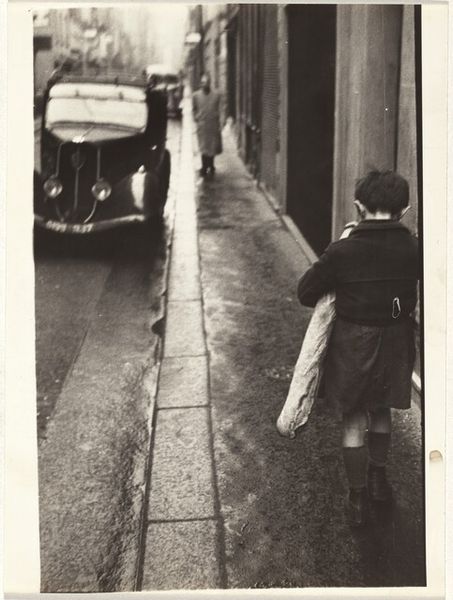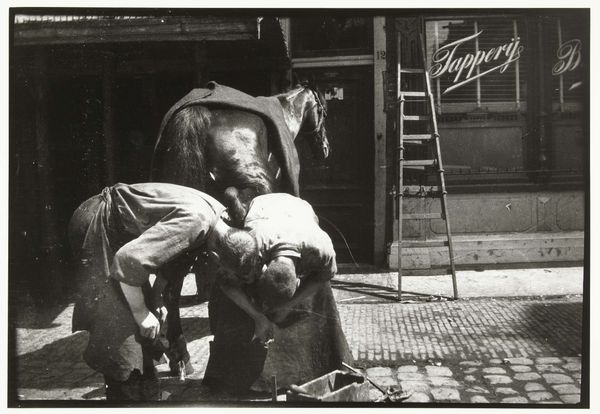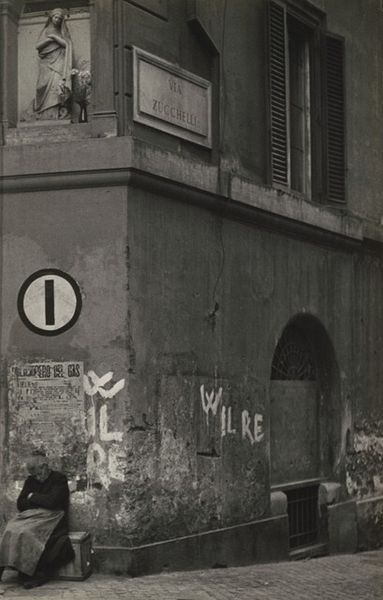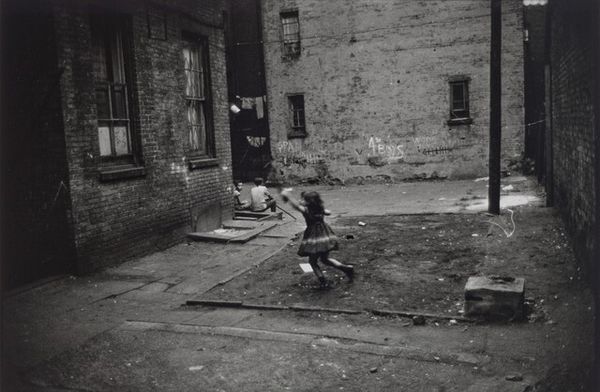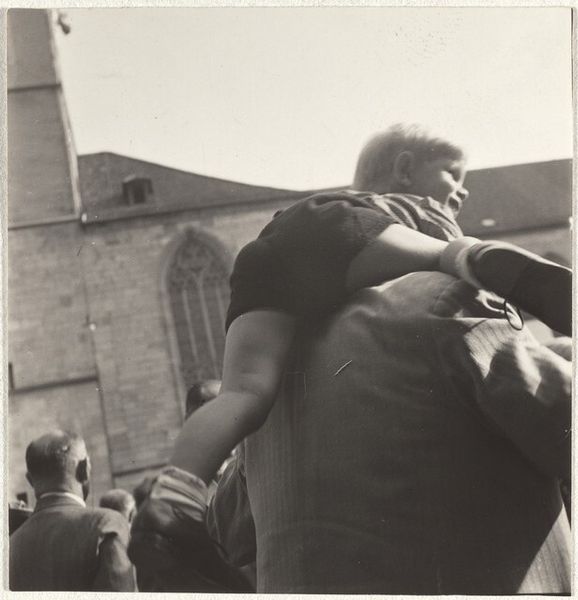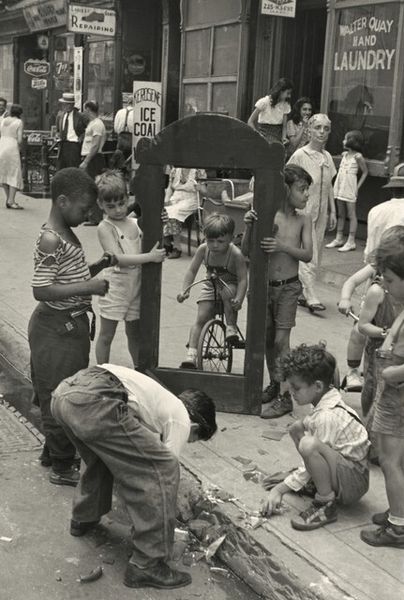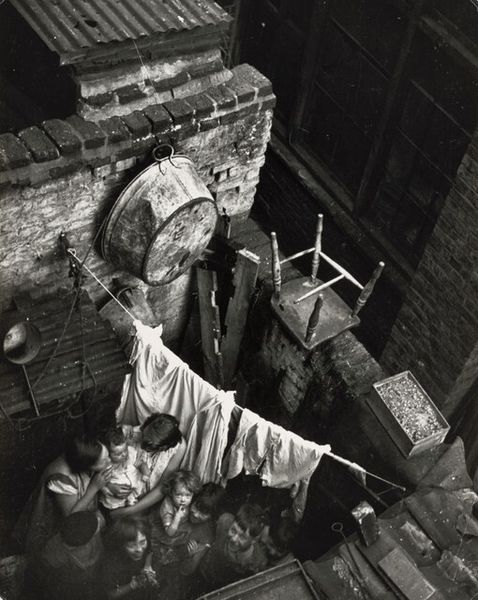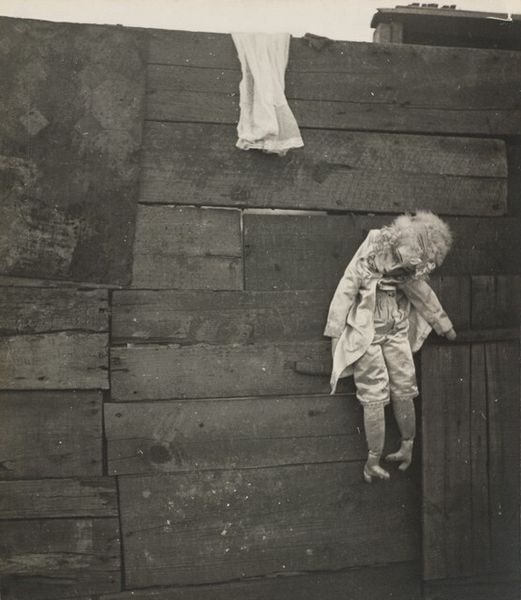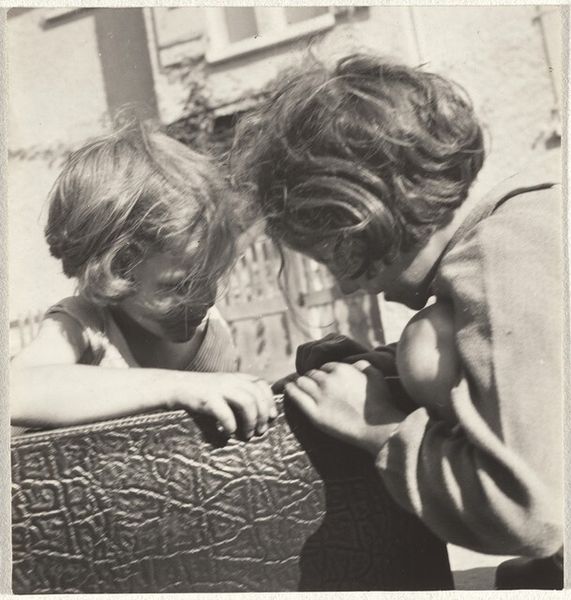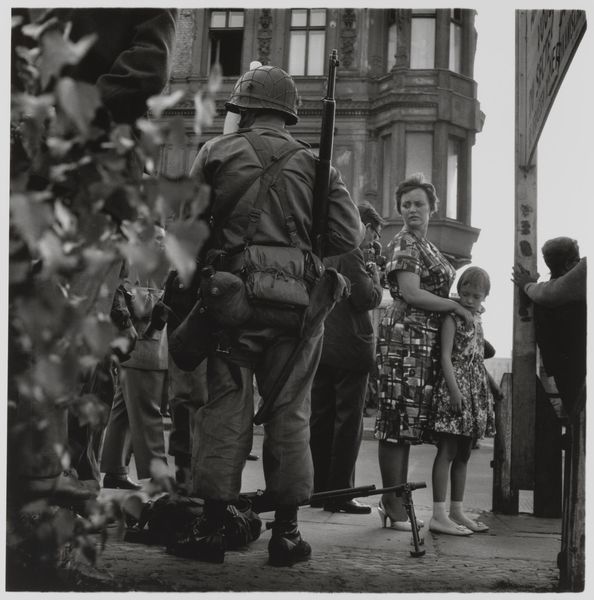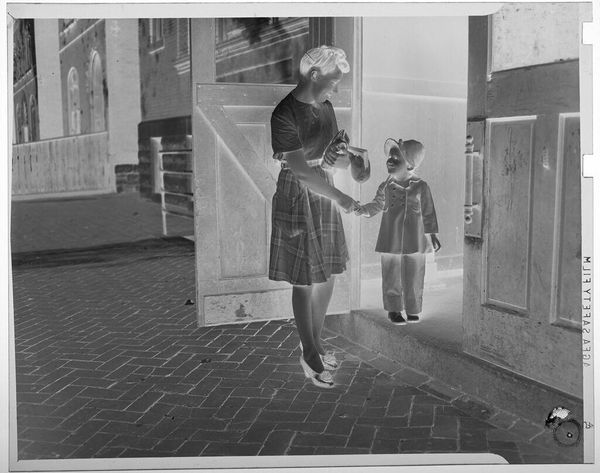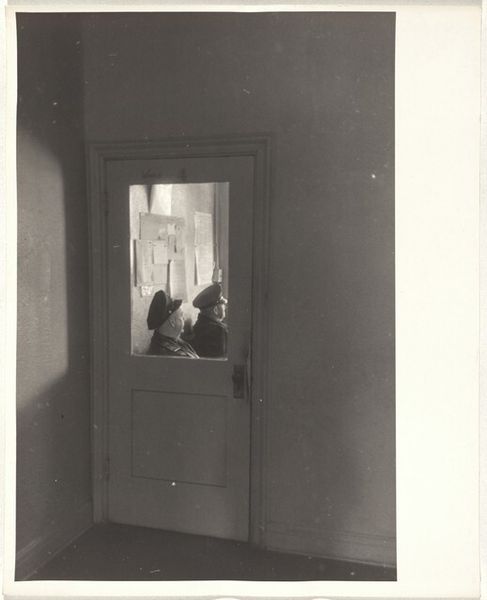
photography
#
portrait
#
street-photography
#
photography
#
ashcan-school
#
cityscape
#
realism
#
monochrome
Dimensions: sheet: 19.8 x 12.2 cm (7 13/16 x 4 13/16 in.)
Copyright: National Gallery of Art: CC0 1.0
Editor: This black and white photograph, “New York” by Helen Levitt, was taken around 1938. What strikes me is the way Levitt captured these kids using the architecture – climbing all over it. What’s your take? Curator: It’s important to see the materiality here. These kids are interacting with urban structures, probably stone or concrete, maybe even steel underneath. The building isn't just background; it's a play structure shaped by labor and resources. It frames their interactions and dictates their movements. What do their clothes suggest about their class and their relationship to the built environment? Editor: They look like they're wearing everyday clothes, not anything fancy. Maybe they don't have access to formal playgrounds? So they’re using what’s available. Curator: Exactly. The Ashcan School aesthetic at play here directs us to think critically. Levitt gives us a window into how the working class used urban space in a period of considerable social upheaval and poverty. The materials these kids encounter everyday, this building they climb all over – it’s not happenstance, is it? It's reflective of societal priorities. Editor: I guess I was focusing on the children themselves and the sort of candid moment. I hadn’t considered how the materials of the city influenced their play. Curator: Levitt’s perspective is vital, providing evidence of lived realities. How are the means of material production affecting these kids lives, their actions? Look closer. Notice the wall to the side seems barricaded behind wire mesh. Where do you see material stratification reflected? Editor: That makes sense! The photo’s not just a charming snapshot; it’s commenting on access and resourcefulness within a specific time. Thanks, I’ll remember to always consider what and how art is created as a mirror for social commentary. Curator: Precisely! Analyzing art's materiality opens a deeper connection to understanding our own complex engagement within socioeconomic environments.
Comments
No comments
Be the first to comment and join the conversation on the ultimate creative platform.

